Nervous Energy

Fears are growing amongst energy rating trainers that Ireland is running out of time to ensure building energy ratings are in place for existing homes at point of sale or rental from January. Jeff Colley spoke to SEI and to leading figures involved in energy rating training to find out more and shed some light on how homes will be assessed.From 1 January 2009 every house or flat put up for sale or rental in Ireland must come with a Building Energy Rating (BER) certificate for prospective buyers or tenants. Borne out of a requirement of the EU Directive on the Energy Performance of Buildings, the across-the-board introduction of BERs could become the key mechanism for stimulating the shift in earnest to a low carbon housing stock. For the first time, Irish people will have a simple means of comparing the energy performance of dwellings. With oil prices at an historic high, climate change creeping into the national psyche, and a housing market in recession, a good BER is bound to become a key advantage in selling or renting a home from January on. That is, assuming BERs are in place by January.
Concern has been growing in recent months at the lack of visible progress on the development of a BER system for existing dwellings, with some industry experts Construct Ireland spoke to questioning whether Sustainable Energy Ireland, the statutory authority charged with implementing the directive, is on course to ensure a sufficient number of assessors are trained up in time.
“By far and away the most important issue is to ensure that there are a sufficient number of trained, qualified and registered assessors in place for the introduction of the scheme into the existing dwelling market on 1 January 2009” said Bill Sheldrick, director of IHER Energy Services and trainer on Energy Action’s new dwelling BER assessor course in Dublin, which has to date trained roughly 200 FETAC certified assessors. “Without a clear statement, and a scheme in place soon, we risk jeopardising and interfering with the housing sale market from 1 January or launching a poorly planned scheme in a rush”.
The requirement for BERs for new dwellings kicked in for all new planning applications at the start of 2007. According to Paula Rice, programme manager with SEI on the directive, registered assessors for new dwellings will be targeted for additional training to satisfy the existing dwellings requirement. But is SEI confident that a sufficient number of assessors certified to deliver BERs for all existing dwellings coming onto the market will be in place by 1 January? “Yes, we will be focusing on this as a priority” Rice told Construct Ireland. “We have had positive feedback from assessors and expect that the majority of the 520 assessors registered to date for new dwellings will be registering to rate existing dwellings”.
However, much work needs to be done before assessors can be trained up, certified and registered with SEI as assessors for existing dwellings. At the time of going to print, the training providers Construct Ireland spoke to have received no definitive answers from SEI regarding what the methodology for assessing existing dwellings will be and when it will be available, or whether they’ll be able to offer bolt on modules for assessors who’ve already been through the new dwelling BER courses. As of the end of April, the SEI website does little to appease concerns. It is stated that “The survey methodology for BER assessments of existing dwellings is currently being drafted. Once finalised, the training specification for BER assessor training programmes for BER of existing dwellings will be produced. Training providers will then be in a position to develop and run BER training programmes for existing dwellings”.

Bill Sheldrick, director of IHER Energy Services pictured at an awards ceremony for the first 100 assessors who came through Energy Action’s course with certification
The assumption across the industry has been that the Dwelling Energy Assessment Procedure (DEAP), SEI’s system for assessing new dwellings, will be adapted to enable existing dwelling assessment. According to Paula Rice this assumption is correct, and an amended version of DEAP along with a survey methodology – basically an amended version of the DEAP manual – will be available in September for existing dwelling assessor courses. Given the many errors within the current DEAP software, will SEI be taking this opportunity to create a new, more accurate version to handle both new and existing dwellings? “Yes, the upgrade to DEAP is addressing known errors/bugs and the upgraded software will facilitate the rating of both new and existing dwellings” said Rice.
Timing in particular is a critical factor. If the timeframe from training to registration of assessors follows similar lines to the new dwelling BER situation, Ireland may struggle to meet the January deadline. On successful completion of a BER training course, candidates are awarded a Level 6 Certificate. These certificates are awarded by the universities, the institutes of technology, HETAC or FETAC. Assessors who underwent training for new dwelling assessments have often seen a lengthy wait before becoming registered with SEI.
Up till now, FETAC have had two formal exam result submission dates, which fall in May and November, but they have been prepared to make exceptions, according to Bill Sheldrick: “FETAC have been very supportive of getting as many DEAP assessors as possible into the system as quickly as possible” he said. “For example, in 2007 they also allowed submissions in August and September for new build DEAP assessors. Again, in January this year, they opened it for two days just before term started to get candidates into the FETAC system and externally examined as soon as possible”. Nonetheless, at times there were lengthy delays for both FETAC and HETAC certified assessors who applied to be on SEI’s register. SEI has been understandably careful to ensure that assessors it approves to be on its register have come through the external examination process with their certification intact. Therefore SEI has asked assessors to submit their certificate with their application, but the physical certificate can take up to two months after course completion to be issued. According to Paula Rice, there is scope for flexibility here; SEI don’t need to see the actual parchments, once the accreditation body can confirm that the assessor is certified.
Fortunately, current changes within FETAC should further help to speed their process up, according to Roisin Sweeney, project officer with FETAC: “Our assessment process is changing from July this year and we’ll be offering certification four times per year” she told Construct Ireland. “It will be August/September, November, probably January/February and May.
“We’re also moving from an external examination process to external authentication, where providers will be able to contact an authenticator from a panel that FETAC’s going to set up. The provider will have more control over assessments because they will be able to plan and deliver their assessments based around those four periods. Rather than wait for us to send an external examiner to them, they will be able to pick someone from our panel of authenticators. The provider in turn has to implement certain additional assessment procedures to do this”.
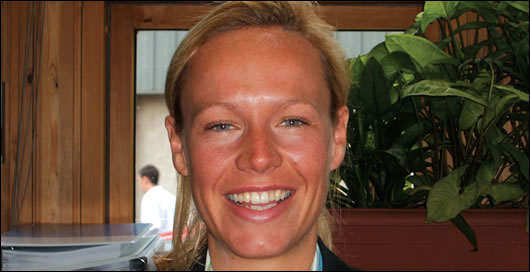
Paula Rice, programme manager with SEI on the Energy Performance of Buildings Directive
In spite of the size of the task, Sweeney is optimistic when asked whether there is sufficient time to train up assessors for the January deadline: “I think so. We’re all here to work cooperatively to achieve the same outcome. Where a state agency has a requirement we try and work with them as proactively as we can” she said.
SEI has made an additional requirement which is bound to add time to the process, in the planned establishment of an additional exam, which every assessor interested in registering with SEI will have to sit. According to Paula Rice the exam – which will be in venues around the country – will start in the autumn. “It’s to make sure that everyone is coming out with the same learning outcomes” she said.
Rice told Construct Ireland that SEI is taking steps to ensure that assessors who’ve been through new build BER courses should be able to avoid undergoing a full BER course for existing dwellings. “It is SEI’s intension that the training specification for existing dwellings will allow courses to be either bolt on modules to new dwelling courses (in which case the common learning outcomes do not have to be repeated) or the existing [dwelling] BER course may be a standalone course where all learning outcomes will have to be covered” she said. “SEI is currently in discussions with FETAC with regard to extending the FETAC Standard for BER of new dwellings to include existing dwellings. Similar discussions have also commenced with HETAC trainers. It is expected that training courses will be available from September 2008”.
Allowing the option of a bolt on module could present its own difficulties, given the differences between BER assessments for new dwellings – which can be entirely based on design information – and existing dwellings, where the assessor is faced with attempting to determine characteristics of an actual building. Although a bolt-on course may help satisfy SEI’s need to meet the January deadline whilst pleasing many assessors due to the lower cost and time commitments, a shortened course may not produce the best assessors. According to Dr Brian Maguire, director of academic affairs, HETAC, a trade-off may be inevitable given the time constraints: “We have seen even in our sector differences in the duration of the courses. Some providers are taking the view that they want to do it more thoroughly and provide a greater context, stronger underpinning and more related materials whereas other providers are taking the view that what the market needs is greater numbers of assessors certified more quickly. They will all meet the standard in that they will be able to give the ratings, but the question of whether their answers are robust will depend on the detail of the course”.
According to Paula Rice, the experience of any would be assessors will be key in determining which course they take: “For those who have already completed a training course for BER of new dwellings, the training required for existing dwelling will be top up training which will focus on the survey methodology. The amount of training required will depend on the skill level of the individual assessor. New dwelling assessors who have extensive on-site experience may need minimal top up training. New dwelling assessors with no on-site experience will need more extensive training”.

Peter Keavney, Association of Irish Energy Agencies, training officer and principal lecturer, at Tipperary Institute’s Certificate in Building Energy Rating course, delivering training
But what will that training entail? Will it be a requirement of existing dwelling BER courses to have an element of training delivered on site? “The training specification is currently under review; it is considered that on-site experience will be required in order to carry out BER assessment for existing dwellings” Rice told Construct Ireland. “It may be possible that this experience can be gained through training, previous relevant experience or a combination of both. The specific details will be fully set out in the revised training specification”.
The response from trainers Construct Ireland spoke to was unanimous: existing dwelling BER courses must include delivering some training on site. Peter Keavney, Association of Irish Energy Agencies training officer and principal lecturer at Tipperary Institute’s Certificate in Building Energy Rating course said: “Any course must include hands-on practical training for identification and measurement of main fabric elements, heating and hot water system type and the level of controls. This can only be categorised by experienced and onsite assessment”. Keavney’s point is shared by Seamus Hoyne, programme leader of the Tipperary Institute course. “If people are going to be giving assessments of existing buildings they need to have the skills and the only way you can learn the skills is go out on site and do it” he said. “We would see it as a fundamental part of the programme”. Bill Sheldrick is equally vehement on this point: “I don't believe that you can train people adequately to carry out energy surveys of existing houses without practical field experience - surveying actual houses in the real world” he said. “Surveyors need experience of different types of houses, different constructions, and different types of heating systems. If you simply imported the RdSAP training require- ments from England, a trainee BER surveyor needs to demonstrate that they have surveyed at least four practice houses, and ensure they have covered a range of house characteristics. Another house has to be surveyed under exam conditions, and that is for their simplified data collection. If SEI allow defaults to be over-ridden, then it would be expected that trainee surveyors cover at least one such house as well.”
Sheldrick points out that many would-be-assessors may have little problem carrying out a new build BER, but may lack the specific skills to accurately determine the values of an existing dwelling unless the training specifically addresses this. “Many potential BER assessors for existing dwellings are not heating engineers or from a heating background, whatever they might know of built form and U-values” he said. “With new build they do not have to visually identify the heating system because they only have to find out what has been proposed and then enter it into DEAP. Even then it has been interesting to see how little experience or knowledge of heating systems many new dwelling assessors have when they start the course. However, when you visit an existing house you will not have someone telling you what heating system is to be installed. You will have to visually determine exactly what that metal box is in the corner: how does it work, and what are the controls? It's information they're not going to be able to deal with unless the training addresses it”.
Ireland’s approach to implementing the directive has drawn heavily from the UK, with DEAP regarded as almost a carbon copy of SAP, which, given that the UK has already implemented the existing dwellings rating requirement in England and Wales, provides useful experience for the Irish market. A major criticism of the existing dwelling implementation in the UK arises out of their methodology’s failure to allow assessors to override default building characteristics, which are based on minimum building regulation standards at the time of construction. Theoretically this would lead to exemplar low energy buildings achieving poor energy ratings. Will the Irish methodology avoid this apparent oversight and allow assessors to override default data by inputting calculated values? “Yes it will,” said Paula Rice “but if an assessor does choose to override the default values this must be evidence based. The evidence must be recorded by the assessor and SEI may look for such evidence during the audit process.”

Seamus Hoyne, programme leader of the Tipperary Institute course keeps a watchful eye on the class
This deviation from the UK approach meets with strong approval from the Irish trainers. “I think that’s very important” said Seamus Hoyne. “Good assessors should be calculating U-values and should have the ability to override based on their assessment. “It is to be commended that SEI have done that” added Sheldrick.
But what of the default values? Given the lack of policing of building regulations in Ireland, will the new methodology assume that the building originally complied?
“The default values will be based on the assumption that the dwelling complied with the relevant building regulations” Rice said. “In that context, the methodology will also take into consideration the transitional periods allowed for each amendment to the building regulations. However, if there is evidence that the building was not built to the building regulations which were current at that time, the assessor may choose to override the default values”. Rice also pointed out that the BER Assessors Code of Conduct states that the BER assessor is responsible for the accuracy of the submission to SEI. According to Seamus Hoyne, there’s an important distinction to make here. “At all points it should be made clear that the assessors are not in a position to do the job of the building control inspectors” he said. “For new buildings it’s fairly obvious that you can go back to the client and get them to change the details but for existing buildings it’s much more difficult to address”.
Bill Sheldrick also told Construct Ireland of a missed opportunity for encouraging energy efficiency that he feels must be addressed with the imminent changes: “The print out from within the current new build DEAP program is for the most part completely useless for providing householders with practical information about how to upgrade their existing house and how much they may save in money or energy by carrying out specific improvements” he said. “This needs to be changed for the existing dwelling market. In addition to a rating score, the DEAP program needs to provide clear, unbiased, practical information on how to improve their dwelling, and what they will reap in rewards as a result”.
Only time will tell whether or not a sufficient number of suitably qualified BER assessors are in place in time for the January deadline. If not, Ireland will not only be once again in breach of an EU directive, but will potentially see chaos in an already ailing housing market. Lamentably, this situation could so easily have been avoided had there been more effort before now to implement a directive that has been in force since 2003. “The time lines are too short” said Seamus Hoyne. “It’s putting pressure on everyone from the assessors to the course providers right up to SEI to get it right. I would have some sympathy for SEI in terms of the workload placed on them but the sooner the training providers could have had the spec, the better for everyone”.
- Articles
- Energy Performance of Buildings Directive
- Nervous Energy
- Building Energy Rating
- BER
- FETAC
- assessors
- auditors
- Irish Energy Agencies
- DEAP
- sustainable energy ireland
- sei
Related items
-
 Embodied carbon & zero emission targets adopted in new EPBD
Embodied carbon & zero emission targets adopted in new EPBD -
EU votes through EPBD recast
-
 When is an A-rated home really A-rated?
When is an A-rated home really A-rated? -
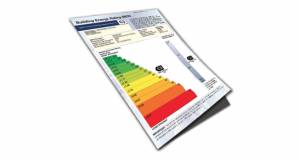 BERCerts.ie offering ventilation validation
BERCerts.ie offering ventilation validation -
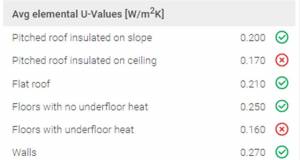 Software errors create false NZEB compliance picture
Software errors create false NZEB compliance picture -
 WWHR an easy & costeffective route to Part L compliance — Showersave
WWHR an easy & costeffective route to Part L compliance — Showersave -
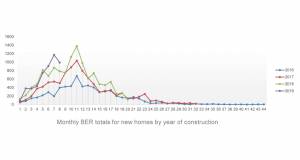 BER data indicates national house building growth – except for Dublin
BER data indicates national house building growth – except for Dublin -
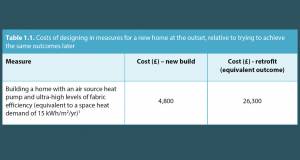 New housing should be to passive house standard — Climate Change Committee
New housing should be to passive house standard — Climate Change Committee -
 BER data: sick buildings risk while new build surges
BER data: sick buildings risk while new build surges -
 Saint-Gobain launches free nZEB training courses
Saint-Gobain launches free nZEB training courses -
 Architect returns to roots with A1 rated 'house of the people'
Architect returns to roots with A1 rated 'house of the people' -
 G-rated Meath bungalow aims for A rating — without renewables
G-rated Meath bungalow aims for A rating — without renewables

